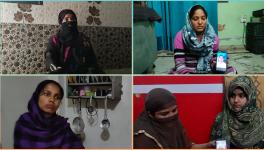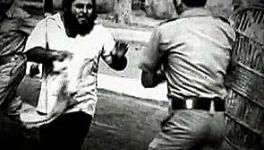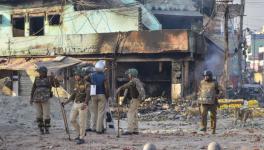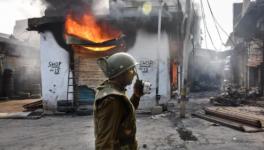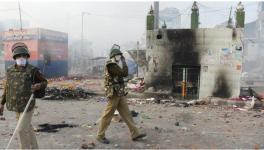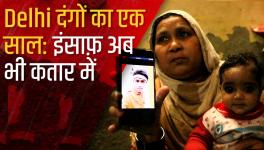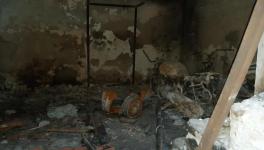Delhi Violence: Genesis of a Carnage
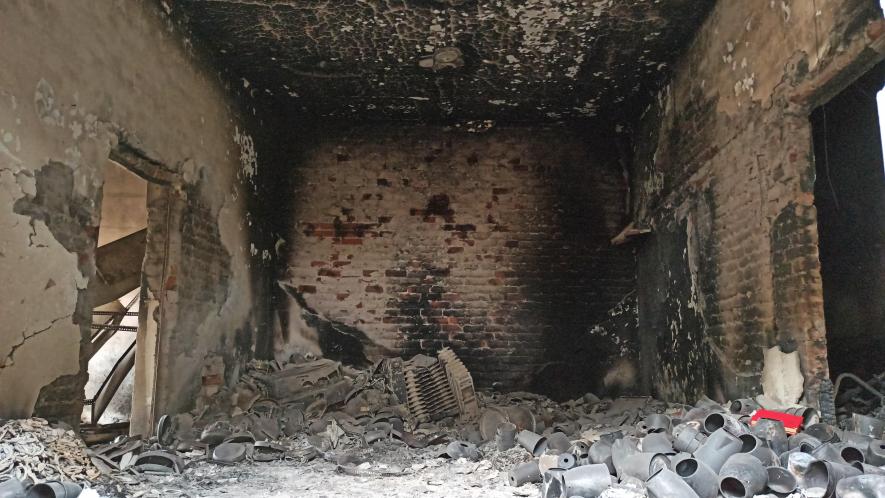
They say that history repeats itself, first as tragedy then as farce. In India’s case, communal violence not only keeps repeating itself, its pattern changes every time. What is mostly kept under wraps is those features of such violence which are constant. The same can be said about the Delhi violence. Its interpretations and the causative factors are very discernible, but its perpetrators generally have a knack for shifting the blame on the victim community or those who stand by the victims.
The carnage began, presumably, in the aftermath of the statement by Bharatiya Janata Party leader Kapil Mishra, given in front of a top police official, in which he threatened to get the roads emptied of the protests against the amended citizenship law. But the roots of the violence had been sown earlier. Interpretations given by the Hindu nationalist camp were that the riot happened due to the changing demographic profile of the area. The rationale given was that the number of Muslims are increasing in number in the areas affected by the violence, while Shaheen Bagh was painted as ‘Mini Pakistan’. As per them, the BJP’s policies in matters like triple talaq, Article 370 and the CAA-NPR-NRC triad has unnerved ‘radical’ elements, which led to this violence.
Before coming to the observations of activists and scholars of communal violence in India, we can briefly say that the violence, which claimed 53 lives, includes a policeman and one intelligence officer. A majority of the victims are Muslims, with the violence starting right under the nose of the police and the ruling party. Videos and eye-witness accounts establish that the police not only looked the other way, but in some instances assisted those attacking innocent victims and burning and looting selective shops.
Union Home Minister Amit Shah was nowhere on the scene. For the first three days, rioters had a free run. After the paramilitary forces were brought in, the violence simmered and slowly reduced in intensity. The Aam Aadmi Party government, which, in a way, is a by-product of the RSS-supported Anna Hazare movement, was busy reading the Hanuman Chalisa and praying at Raj Ghat with its eyes closed to the mayhem unfolding in parts of Delhi.
Communal violence is a sore point of Indian society. It began during the colonial period due to the British policy of divide and rule. At its roots was a communal way of looking at history, through which the British proactively sowed the seeds of Hindu-Muslim discord. On the level of the administration and police, the British were fairly neutral. On the one hand, the national movement was uniting people and creating and strengthening a fraternal feeling among Indians. On the other had were Muslim communalists (as in the Muslim League) and Hindu communalists (Hindu Mahasabha, RSS) who assisted the British goal to divide and rule and promoted hatred between the communities.
After Partition, the first major development was the change in attitude of the police and administration, which started tilting against Muslims. Major studies by reformist and activist, the late Asghar Ali Engineer, eminent political scientist Paul Brass and scholar-activist the late Omar Khalidi demonstrated that an anti-Muslim bias was discernible during and after riots.
In the same vein, the partisan role of the Delhi Police has been visible all through in the Delhi riots. The Srikrishna Commission report on the Bombay riots brought forth this fact long ago, as did the research of the former DIG of Uttar Pradesh Police, VN Rai, in the context of another riot. His studies concluded that no communal violence could go on beyond 24 hours unless the state administration is complicit in the carnage. In the Dhule violence of 2013, which was investigated by a team of concerned citizens, this author observed that the police itself went on a rampage against Muslims and their properties.
Violence during riots is made out to be spontaneous, as the Home Minister did, but a riot is by nature a well-planned series of acts. Violence is orchestrated in such a way in them that it is made to appear that the Muslims began the fighting. It is made to seem that the critical question is who cast the first stone. Scholars point out that the carnage is so organised that the encircled community is forced to throw the first stone. In this way the ground is prepared for the pretext that ‘they’ (the minorities) were the instigators.
Pretexts against minorities have always been manufactured—the train that burned at Godhra before the Gujarat violence, the murder of Swami Lakshmanananda before riots in Kandhamal, and now the protests against the unjust CAA-NRC-NPR triad at Shaheen Bagh. It may be that Hindu-Muslim violence began as riots. However, they are no more a riot when two sides are not involved. Plain and simple, it amounts to anti-minority violence in which some from the majority community are also victims.
Now this violence can be viewed as hatred against the minority taking a more or less structural form. A deeper sense of hate against Muslims and Christians has long been cultivated and Hindu nationalist politics, right from its shakhas, or smallest grass-roots branches, to social media have been put to use to spread it.
This hate has been exaggerated by multiple utterances from BJP leaders, from the Prime Minister Narendra Modi saying that those who oppose the newly-amended citizenship law can be recognised by their clothing to Shah asking voters to press the electronic voting machine buttons so hard that their current is felt in Shaheen Bagh, to BJP Member of Parliament Anurag Thakur (who made a crowd chant shoot the traitors, implying the targeting of Muslims, who have been opposed to the CAA) to Uttar Pradesh Chief Minister Yogi Adityanath saying that if words do not work then bullets will and another BJP leader Parvesh Varma saying that the protesters are rapists-in-the-making. Before and after the Delhi carnage, “goli maro” or, shoot them, seems to have become the central slogan of Hindu nationalists.
Delhi’s violence has also been the first one in which the deaths seem to be more due to bullets fired than by knives or swords. Clearly, a leader’s slogans do not seem to be in vain. Courts, the protectors of our Constitution, seem to be of little help as when one of them, Justice S Muralidhar, gave an order to file cases against hate-mongers, he was immediately transferred.
Another observation from the entire tragedy is the surfacing of the true colours of the Aam Aadmi Party, which not only kept mum as the carnage peaked, but the Chief Minister of Delhi also praised the police. Arvind Kejriwal did so after the police apparently controlled rumours that had spread far and wide in the aftermath of the riots—but he has still come a long way from the days when he and the AAP used to critique and criticise the police strongly.
Finally, let us recall an academic study from Yale University. It find that the ‘BJP gains in electoral strength after every riot’. In India, the grip of communalism is increasing at a frightening pace. Efforts are needed to combat hate and hate mongers.
The author is a social activist and commentator. The views are personal.
Get the latest reports & analysis with people's perspective on Protests, movements & deep analytical videos, discussions of the current affairs in your Telegram app. Subscribe to NewsClick's Telegram channel & get Real-Time updates on stories, as they get published on our website.










